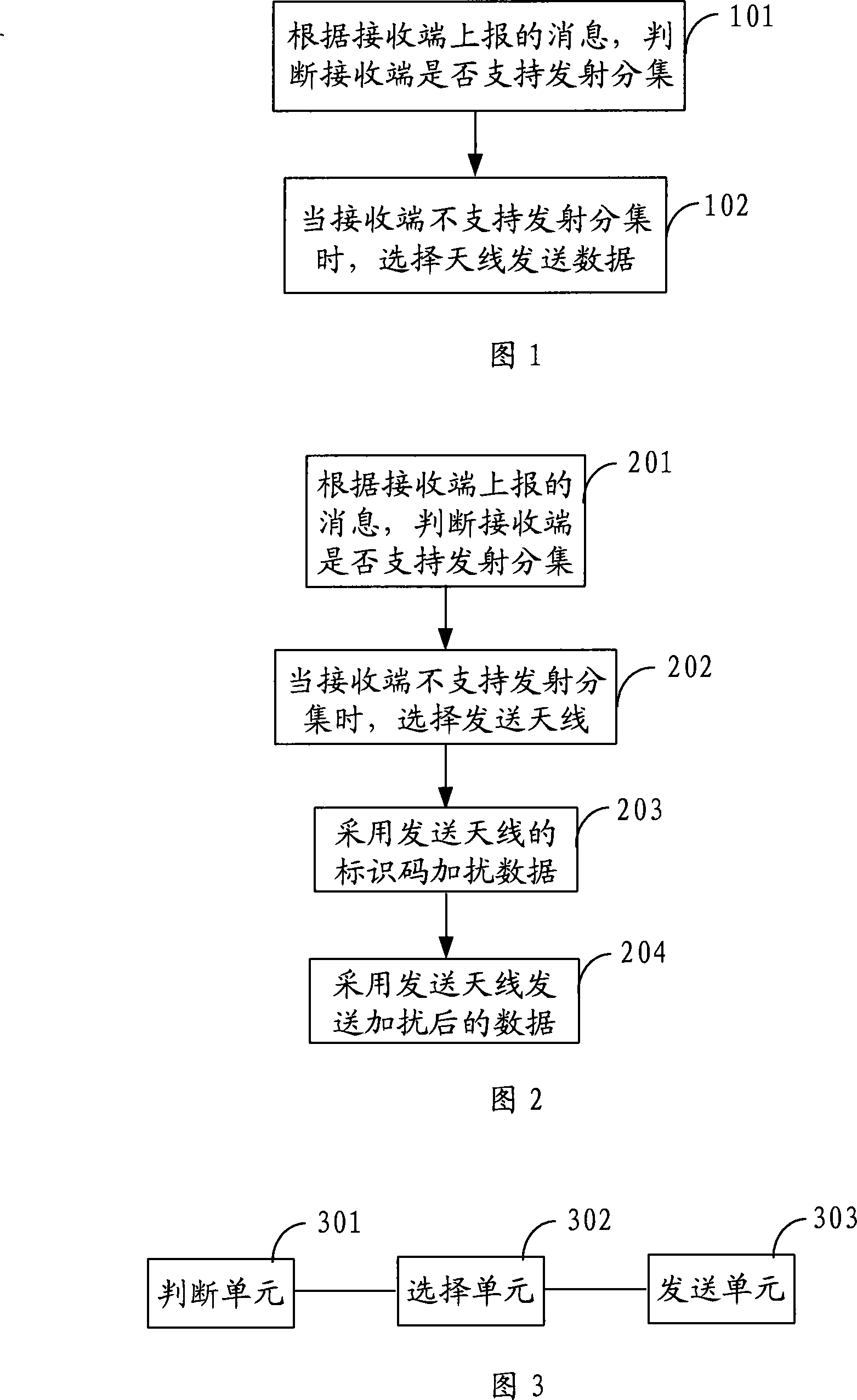Apparatus, base station and method for sending data
A data and base station technology, applied in the field of data transmission, can solve problems such as inability to receive data, unbalanced load between the main transmitting antenna and the secondary transmitting antenna, and inability to fully utilize the power resources of the secondary transmitting antenna, so as to achieve the effect of improving power utilization
- Summary
- Abstract
- Description
- Claims
- Application Information
AI Technical Summary
Problems solved by technology
Method used
Image
Examples
Embodiment 1
[0016] In the first embodiment, according to the 3GPP protocol, the network side is optional for transmit diversity, and the UE is mandatory to support transmit diversity. Therefore, there is no information element in the protocol to indicate the UE's support for transmit diversity. However, in actual networks, not all UEs implement the support for transmit diversity according to the protocol. In order to better realize the scheduling of data transmission on the network side, a data transmission method of this embodiment is proposed. Refer to Figure 1 for this method. Can include:
[0017] 101. Determine whether the receiving end supports transmit diversity according to the message reported by the receiving end.
[0018] The receiving end includes mobile terminals, multimedia terminals, fixed telephone terminals, etc. The receiving end reports whether it supports transmit diversity, a new message can be set to indicate whether the receiving end supports transmit diversity, or a fi...
Embodiment 2
[0030] The second embodiment is a data transmission method. In this embodiment, the transmitting antenna includes only the first antenna and the second antenna. The P-CPICH channel and the S-CPICH channel specified in the R7 protocol can be used as pilot channels. The first antenna uses the P-CPICH channel to transmit the pilot, and the second antenna uses the S-CPICH channel to transmit the pilot.
[0031] Receive the message reported by the UE, and determine whether the receiving end supports transmit diversity according to the message.
[0032] Refer to 101 in the first embodiment for the method of judging whether the receiving end supports transmit diversity.
[0033] For the data of the UE that does not support transmit diversity, the first antenna and the second antenna can be used to transmit data in turn. When the UE receives data from the first antenna, the data of the UE is only sent from the first antenna, and the transmission load of the second antenna is not occupied....
Embodiment 3
[0037] The third embodiment is a method for sending data. Referring to FIG. 2, the method may include:
[0038] 201. According to the message reported by the receiving end, determine whether the receiving end supports transmit diversity.
[0039]The receiving end reports whether it supports transmit diversity, and according to the message reported by the receiving end, it is judged whether the receiving end supports transmit diversity.
[0040] Refer to 101 in the first embodiment for the method of judging whether the receiving end supports transmit diversity.
[0041] 202. When the receiving end does not support transmit diversity, select a transmitting antenna.
[0042] You can select the transmitting antennas in order, or select the transmitting antennas according to the load, that is, each antenna can transmit data in turn; or the antenna with the lowest load can transmit data.
[0043] For the specific method of selecting an antenna, refer to 102 in the first embodiment.
[0...
PUM
 Login to View More
Login to View More Abstract
Description
Claims
Application Information
 Login to View More
Login to View More - R&D
- Intellectual Property
- Life Sciences
- Materials
- Tech Scout
- Unparalleled Data Quality
- Higher Quality Content
- 60% Fewer Hallucinations
Browse by: Latest US Patents, China's latest patents, Technical Efficacy Thesaurus, Application Domain, Technology Topic, Popular Technical Reports.
© 2025 PatSnap. All rights reserved.Legal|Privacy policy|Modern Slavery Act Transparency Statement|Sitemap|About US| Contact US: help@patsnap.com

